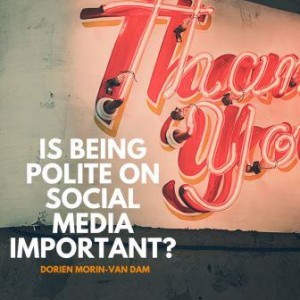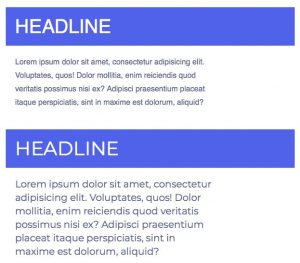DSP, SSP… Sometimes it feels like a bewildering blur of acronyms. Columnist Craig Weinberg is here to help with an explanation of the main types of networks and their pros and cons.

Mobile ad networks are one big reason mobile remains one of the hardest facets of digital marketing to master. We can’t scale without them because most mobile media is purchased through them, but they are a huge source of headaches, since they tend to be black boxes.
Mention “networks” to a good share of mobile marketers, and you’ll get a glare; all too often, it feels like the network/client relationship is heavily skewed towards lining the vendor’s pockets, not doing what’s best for the client.
That said, there’s a tradeoff there; networks have to be good at working within the client’s goals so the client keeps spending money.
An aside: Using “network” as a blanket term could tick off many of the providers under that blanket, so we’ll go with the following: Networks are companies that use basic technology to aggregate media buying, and third-party media vendors cover related companies like SSPs, DSPs and every company that buys media.
Clear as mud, right? Well, let’s break this down further. In this post, we’ll outline the main types of third-party media vendors (with pros and cons for each); then we’ll define the single biggest dirty tactic that marketers might encounter with these vendors; and we’ll close with some advice on insuring yourself against that tactic.
Breakdown of network (OK, third-party media vendor) types
SSPs
SSP stands for supply-side platform; these vendors manage media monetization via SDK (software development kit) or API (application programming interface ) connectivity to the media sources. Their main interest is maximum media monetization; they will run your campaigns as long as they are meeting the media’s eCPM target and will pause as soon as someone bids higher on their media.
Pros:
Direct access to media.
Cons:
They don’t have your best interest in mind; they work for the supply, not the demand.
Bids and rate card:
Your campaign should perform within the SSP’s eCPM target.
Transparency:
Most SSPs are fully transparent, and you can see exactly who you are buying from. MoPub is by far the most advanced exchange.
DSPs
DSPs (demand-side platforms) have the ability to bid on real-time bidding exchanges. They have developed a bidding system and integrated it into the RTB (real-time bidding) exchanges (MoPub, Rubicon, Smaato and others). Most of them have developed an optimization algorithm that allows them to make educated decisions when it comes to the quality of the traffic they are bidding on.
Pros:
Quality media.
Cons:
Media is usually expensive. DSPs don’t have any unique access to media sources. All DSPs are bidding on the same sources; they differ only by the quality of their bidding algorithm.
Bids and rates:
The DSPs should use your CPI target to buy traffic. It’s their job to get back to you with feedback, and you can discuss bid changes. NEVER ask them for their rate card. They are bidding systems — they will bid with whatever you provide them and should recommend a higher or lower bid based on current media availability.
Transparency:
Depends a little on the exchange they are connected to. (You can ask to buy from transparent sources only.)
Media aggregators (also sometimes known as networks)
Media aggregators (Millennial Media, Google, Opera, ironSource, InMobi) allow you to buy from other small networks or directly from publishers.
Pros:
Scaling and optimization abilities — you can build scale quickly and ask them to work within your CPI and CPA targets.
Cons:
Remember that black box we mentioned? Here it is. You will rarely know where the networks are buying from, whether they are tapping into the same sources you are already buying from, and whether your brand is safe with them (i.e., whether it’s racking up some unsavory placements). The quality of the traffic can be very inconsistent.
Bids and rates:
Again, never ask a network for their rate card; they don’t have one. Let them know your target CPI and CPA, and ask them to work within your targets.
Transparency:
A huge hurdle. Some of the networks have no idea who they are buying from, since the offer is re-brokered (more on that below). You can ask to buy from transparent sources only and pass the destination name on the link — but know that this will likely decrease scale dramatically.
Self-serve systems
These systems (StartApp is the best-known) allow you to set your own campaigns, set up your bids and control your spend.
Pros:
You take control.
Cons:
You take control — if you don’t set up the campaign right or experiment and take risks, you will never get the most out of the system. In the meantime, the risk remains on your end.
Bids and rates:
Your call.
Transparency:
These are mostly transparent.
Rewarded media
On these platforms (Tapjoy, Chartboost, Vungle, AppLift), users are rewarded for downloading or using the app.
Pros:
Best scaling abilities in the market.
Cons:
User quality can be poor. Our recommendation: Stay away from buying rewarded traffic unless it’s rewarded video. If the user is rewarded for watching a video but is not incentivized to download the app, you are more likely to see quality users.
Bids and rates:
Usually very low — we’ve found it to be around one-third of non-rewarded media.
Transparency:
Not an issue; these usually run on offer walls.
The dirty little tactic: re-brokerage
Re-brokerage is the industry’s biggest fear. As mentioned, when working with networks, you can never know where your creative is actually being presented. This intimidates advertisers for three important reasons:
• Brand integrity: Zynga doesn’t want its banners on porn sites; Citibank can’t have its banners shown on sweepstakes pages. I’m guessing those scenarios make you shudder as well.
• Rate fight: Eventually, most networks end up buying from the same sources because networks all buy inventory from one another, from exchanges, private marketplaces, web and in-app, native and IAB and so on. This means that while you may buy with three networks, for example (tip of the iceberg), one or all of those networks are often buying traffic and inventory for your campaign from multiple, perhaps unknown, other networks, aggregators and third parties (beneath the iceberg).
Now, the media can ask the networks for higher rates, and the networks, which want to stick to clients’ budgets, cut down their margins and increase the rate. The advertisers get caught in a vicious cycle in which they keep paying more for the same traffic.
• Low quality: With every network the campaign is being re-brokered to, the bid is carved up; in some cases, three or four networks are getting a share before the media actually presents the ad.
As a result, the advertiser pays a $4 CPI but actually receives $1.5 in media value, with the rest going to the brokers.
Steps to prevent re-brokerage
Start at the beginning: Sign partners to a non-re-brokering agreement and enforce it. But don’t assume that’ll take care of the issue. (Unfortunately, I’ve seen agreements breached all too often.)
You also should make a habit of randomly checking referrals — the click ID links sent by the media. In many cases, these links have the sub_aff name, and that’s a flashing red re-brokerage light.
Ask for screen shots of your ad; this forces the networks to account for your placements. It’s easy to hide behind non-transparent media. It’s not easy to do that when the advertiser demands visual transparency and confirmation that its ads are running where and how they should. Most importantly, your brand and the enforcement of brand guidelines, look and feel and so on, stop with you.
Finally, constantly remind the networks of their liability should they get caught re-brokering.
If this post has sufficiently persuaded you not to work with any of these parties, I’ve done a poor job. You should definitely test these partners; it’s how you build mobile scale and performance. But go in with your eyes wide open (and consider hiring an agency if you don’t have time for testing and policing).
Some opinions expressed in this article may be those of a guest author and not necessarily Marketing Land. Staff authors are listed here.
Marketing Land – Internet Marketing News, Strategies & Tips
(36)







